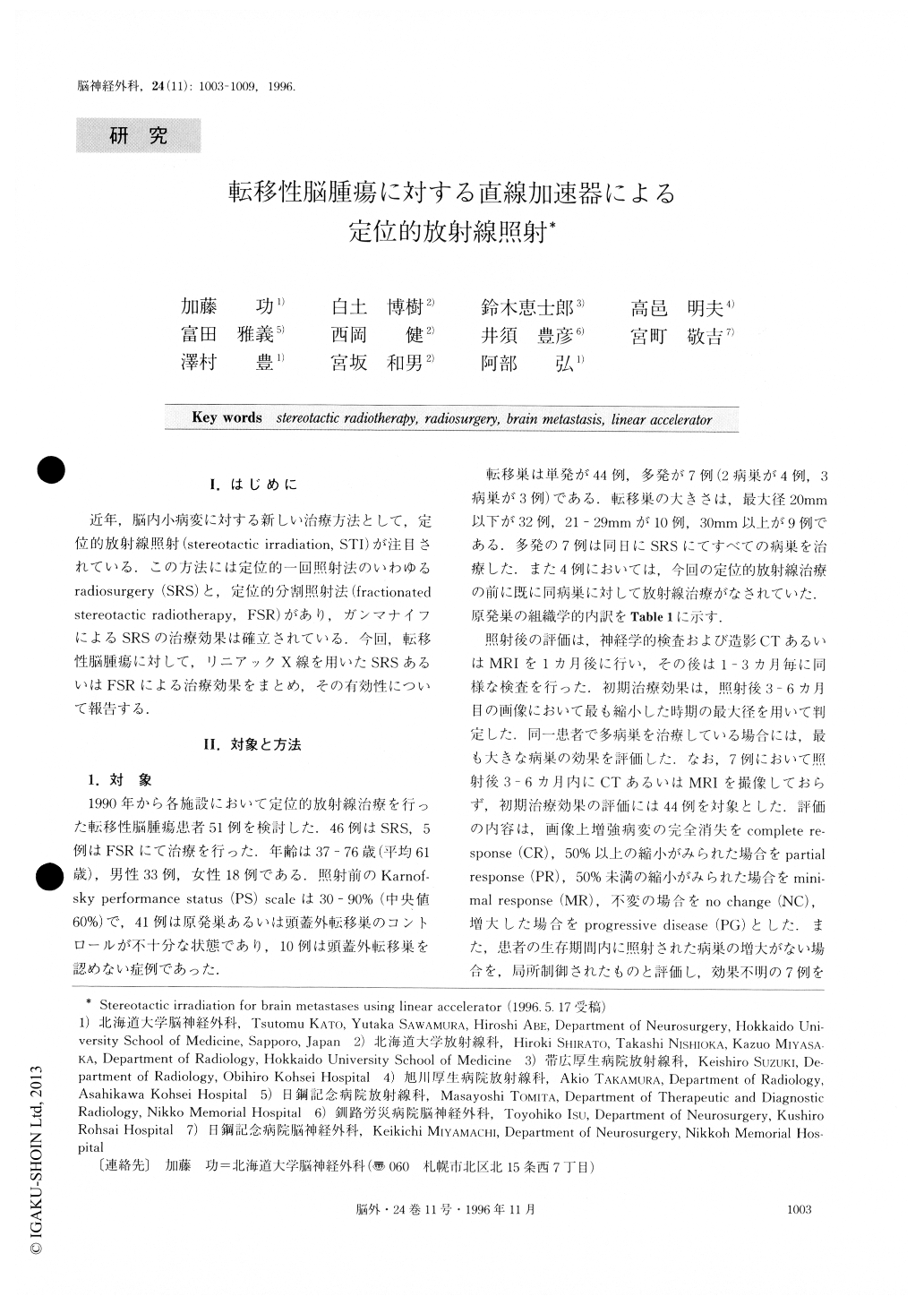Japanese
English
- 有料閲覧
- Abstract 文献概要
- 1ページ目 Look Inside
I.はじめに
近年,脳内小病変に対する新しい治療方法として,定位的放射線照射(stereotactic irradiation,STI)が注目されている.この方法には定位的一回照射法のいわゆるradiosurgery(SRS)と,定位的分割照射法(fractionated stereotactic radiotherapy,FSR)があり,ガンマナイフによるSRSの治療効果は確立されている.今回,転移性脳腫瘍に対して,リニアックX線を用いたSRSあるいはFSRによる治療効果をまとめ,その有効性について報告する.
A stereotactic irradiation (STI) system using a linear accelerator was developed and its effectiveness for brain metastasis was investigated. The system consisted of a conventional linear accelerator, invasive fixation head frame (RADFRAME, Mizuho Ika Kogyo), and a tungsten collimator. The RADFRAME was developed to be used with any linear accelerators and with any dose planning systems. The accuracy of the irradiation was assured to be within±1.5mm. Fifty-one patients with metastatic brain tumors were treated using the system. The overall median survival time was 10 months. No difference in survival was observed be-tween patients with a single lesion and patients with two or three lesions. Complete, partial, and minimal re-sponses were obtained in 16 (39%), 18 (41%), and 7 (16%) lesions. These were comparable to the reported results of gamma knife treatment. A maximum dose of 25 Gy was suggested to be more effective than lower doses. Local Control rate was higher in tumors with a diameter of less than 2.0cm (87.5%) than in larger tumors (60%). No difference in tumor response was observed among various histopathologic types. In a pa-tient with a 25mm cerebellar metastasis from an adeno-carcinoma of the lung, autopsy at 5 months after STI showed fibrinoid degeneration and hyaline deposition without residual tumor at the Gd-enhanced region on MRI. The efficacy of linac stereotactic irradiation was equal to that of gamma knife radiotherapy for metasta-tic brain tumors.

Copyright © 1996, Igaku-Shoin Ltd. All rights reserved.


